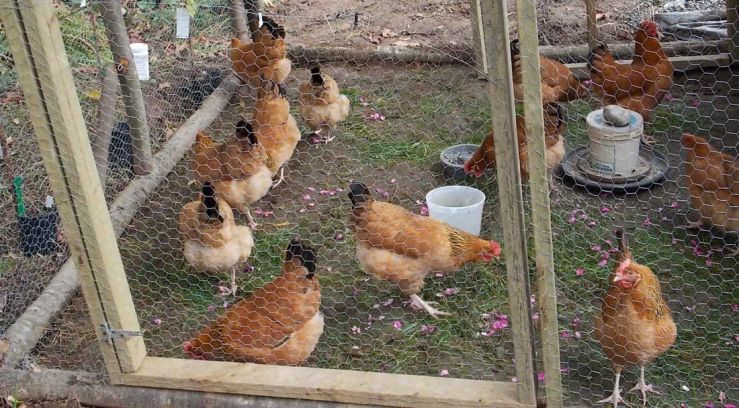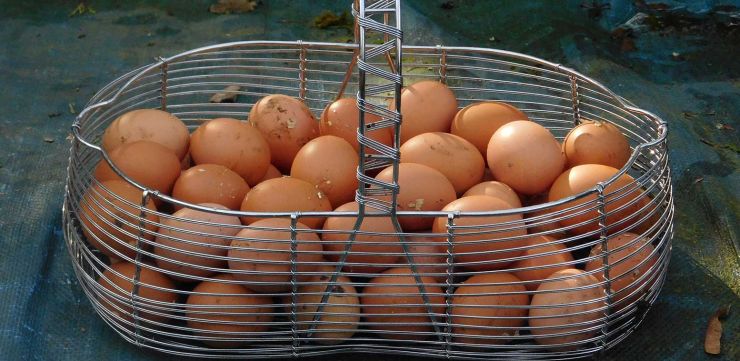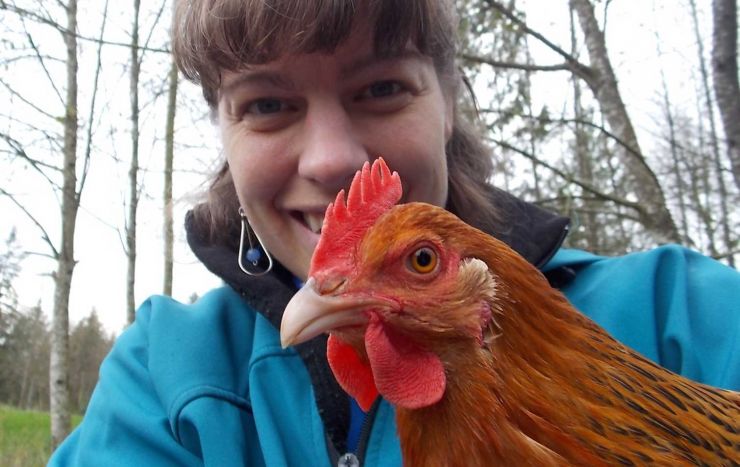

Raising Laying Hens for Pleasure and for Profit
Chickens are social and curious birds. You may even find they bring a peaceful addition to your day. They are relatively easy to care for. Here are some basics to help you care for your flock.
Before you get started on this new venture it is important to check the guidelines of your city or township regarding keeping chickens. Are you allowed to have chickens and, if so, how many?
What are you goals for having chickens?
If your goal is simply to have chickens that produce eggs for you and your families consumption, it will look different than if you are looking to make a profit from the eggs. On average chickens will lay 2 eggs every 3 days, however, this number decreases in the winter time because chickens need about 12 hours of sunlight to lay eggs. First I will lay out the basic needs of caring for chickens and later, give tips on selling eggs.
- Space needed: 2-3 feet per chicken inside the coop and 8-10 feet in an outside run. Also make sure that the coop is predator proof (raccoons, opossums, weasels and skunks)
- Clean water: in the winter place a sealed bottle of 1 part salt to 3 parts water inside the water bucket to slow down freezing.
- Feed: 1/4 pound per chicken per day is recommended with 16% protein. Don’t leave any feed out overnight as this attracts mice and rats.
- Oyster shells: leave a dish full to provide calcium needed for laying eggs with a hard shell. Chickens will eat the oyster shells as they need them so there is no need to add it to their food. In fact, too much of the oyster shells is hard on chicken’s kidneys.
- Limestone grit: leave a dish full that chickens can help themselves to as this helps chickens break down food in their digestive system.
- Roosts for perching: during the day to rest on and at night to sleep on.
- Treats: sunflower seeds, suet in a cage holder, fruit and veggie scraps (except citrus, potato peels and avocado).
- Nest boxes: 1box per 3 chickens with pine shavings for straw inside for bedding.
- dust bathing: is crucial way that chickens can relieve themselves of mites and ticks. Chickens will scratch in the dirt and throw it over their bodies like taking a bath. Options are: filling a tire, litter box or even a kiddy pool with a mix of dirt and sand.

Free ranging:
- Keeps food costs down as chickens love to hunt for worms and bugs in the dirt
- Decreases boredom and feather pecking
- Egg yolks are darker in colour and often more flavourful
- More space for dust bathing, etc.
Chicken Behaviour and Pecking Order
Chickens are social birds who like to be together but use a natural hierarchy system called a “pecking order” to maintain the status and role of each bird in the flock. In essence, this means the strongest or most intimidating chickens get to eat and drink first and choose their favourite nest box while the weaker or less dominant chickens wait their turn. This order is established naturally and early on in the chickens lives. Unless chickens are added or taken away the pecking order is likely to remain constant.
You may wonder what does the process of establishing a pecking order look like? When multiple chickens come to the feeder, water dish or nest box one chicken may give a couple of pecks to another chicken or chase another chicken away from that area. This is an assertion of dominance and means that the chicken who displayed the dominant behaviour is at the top of the pecking order. She has established that she will eat/drink first while the other waits. Another way chickens establish dominance is by facing each other, fluffing up head feathers and even flying at one another. This should only last for a few seconds, resulting in the weaker hen running away. As long as this behaviour doesn't continue for longer than a minute or so and there are no injuries you don't need to intervene or be concerned.
I recommend observing your chickens daily for any unusual behaviour or injuries. When you go in to feed/collect eggs take note of any aggressive behaviour of hens including excessive pecking of another hen. Chickens get bored and stressed if they don't have enough room or food or water. They may peck each other, pull out feathers and in extreme cases cause harm and even death. Chickens are attracted to the colour red which means that if a chicken sees blood on another chicken it will peck at her and, in extreme cases, cannibalism occurs.
If you find a hen with an injury I recommend separating it. Place the injured chicken in its own cage with food, water and a perch. This way you can apply antibiotic cream to the wound daily until it is healed and then release the hen back into the flock. It is important to keep the cage of the injured chicken inside the larger pen of the other chickens as there is a pecking order amongst chickens and, so long as the others can still see this one, that order will not change. However, if this chicken was separated to an entirely new area and then reintroduced the other chickens would reject it as a new chicken and it would be at the bottom of the pecking order and most likely, be picked on.

Egg shells:
-
Blood spots: are normal and can happen due to some disturbance in the process of the egg production, for example, an extra large egg being laid.
- Blood streak: this is not normal and indicates that this chicken may have a wound on her vent, likely caused by another chicken pecking her. This chicken should be separated and her wound treated with antibiotic cream till it heals before being released back with the other chickens.
- Translucent egg shell: is caused by a lack of calcium in the chicken’s diet. Putting out a dish of oyster shells for the hens to freely peck at should prevent this from happening.
- Cleaning eggs: wash under running water slightly warmer than the temperature of the egg as this keeps the pores closed, preventing bacteria from entering in.

- Brown eggs sell better than white: although there is no real difference between white and brown eggs, people seem to think that brown eggs are healthier. This may be due to the comparison of white and brown bread.
- The breed of chicken makes a difference: I recommend the breed Bovan, as they are very consistent layers of brown eggs.
- Average age to lay is at 20 weeks: I recommend buying chickens around this age (referred to as pullets) rather than buying day old chicks. The initial cost of buying pullets is much less than the cost of raising a chick. In addition, you will be able to start selling your eggs within weeks, rather than months, of purchasing your chickens.
- Egg production decreases by about half after chickens reach the age of 11/2- 2 years: So depending on the number of regular customers you have, you may want to consider selling your chickens at this time and purchasing new ones. Also, keep in mind that egg production naturally decreases in winter because the days are shorter and chickens need about 12 hours of sunlight for laying.
- Have two separate coops to shorten your customers lag time : 1 coop for your chickens who are laying and the other coop for your new pullets who have not started to lay yet. Keeping a constant rotation will shorten the lag time for your customers.
Summary
Chickens can be a great addition to your backyard. They are fun to watch, they put themselves to bed and they provide you with breakfast. In my experience, once people try fresh farm eggs vs store bought eggs they are hooked and your in business. So whether you choose to have a few chickens for pleasure or a large flock of chickens to produce a profit, I hope you find that you enjoy it and your chickens are happy and healthy.
Ramona Stevens
